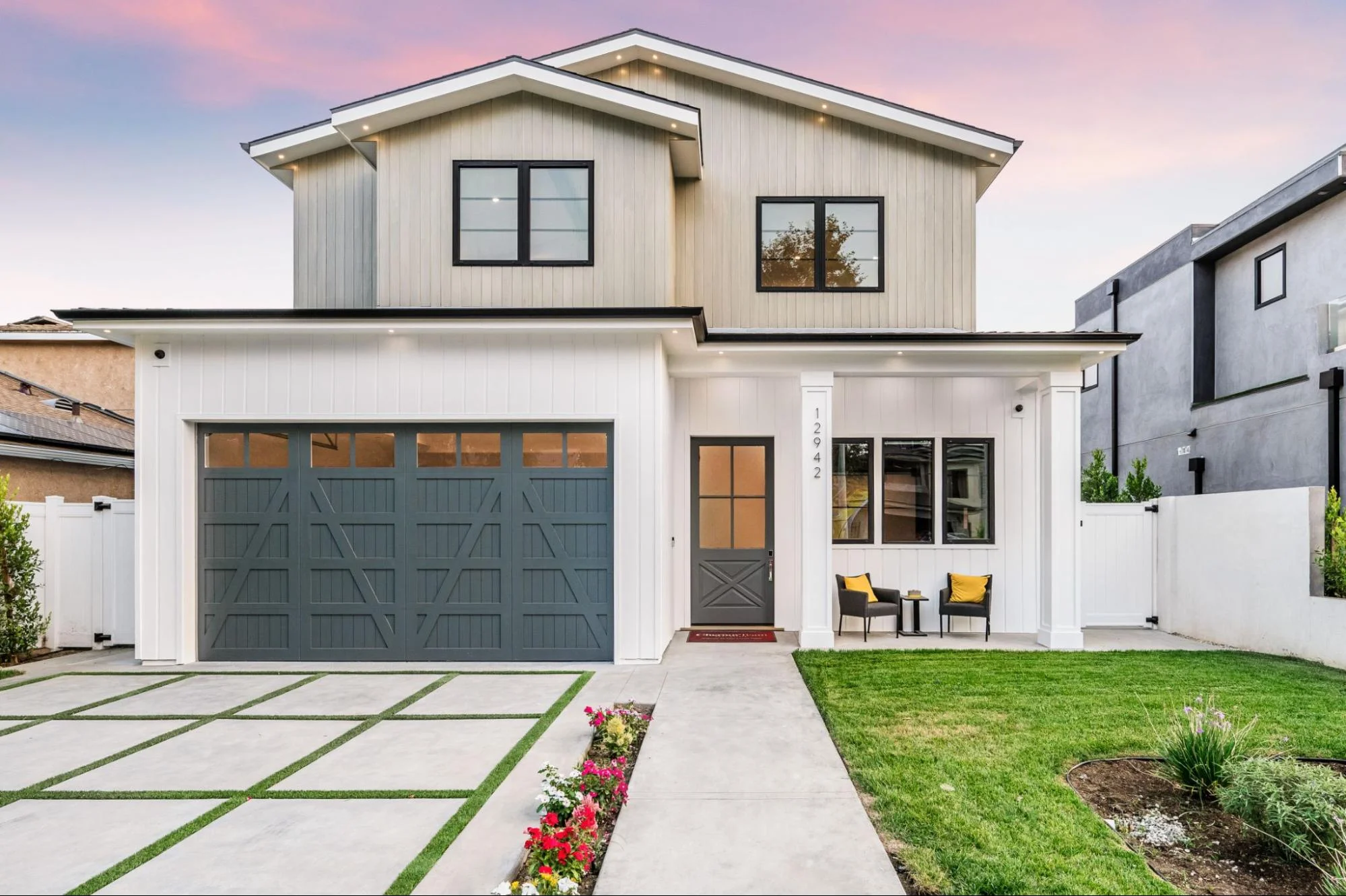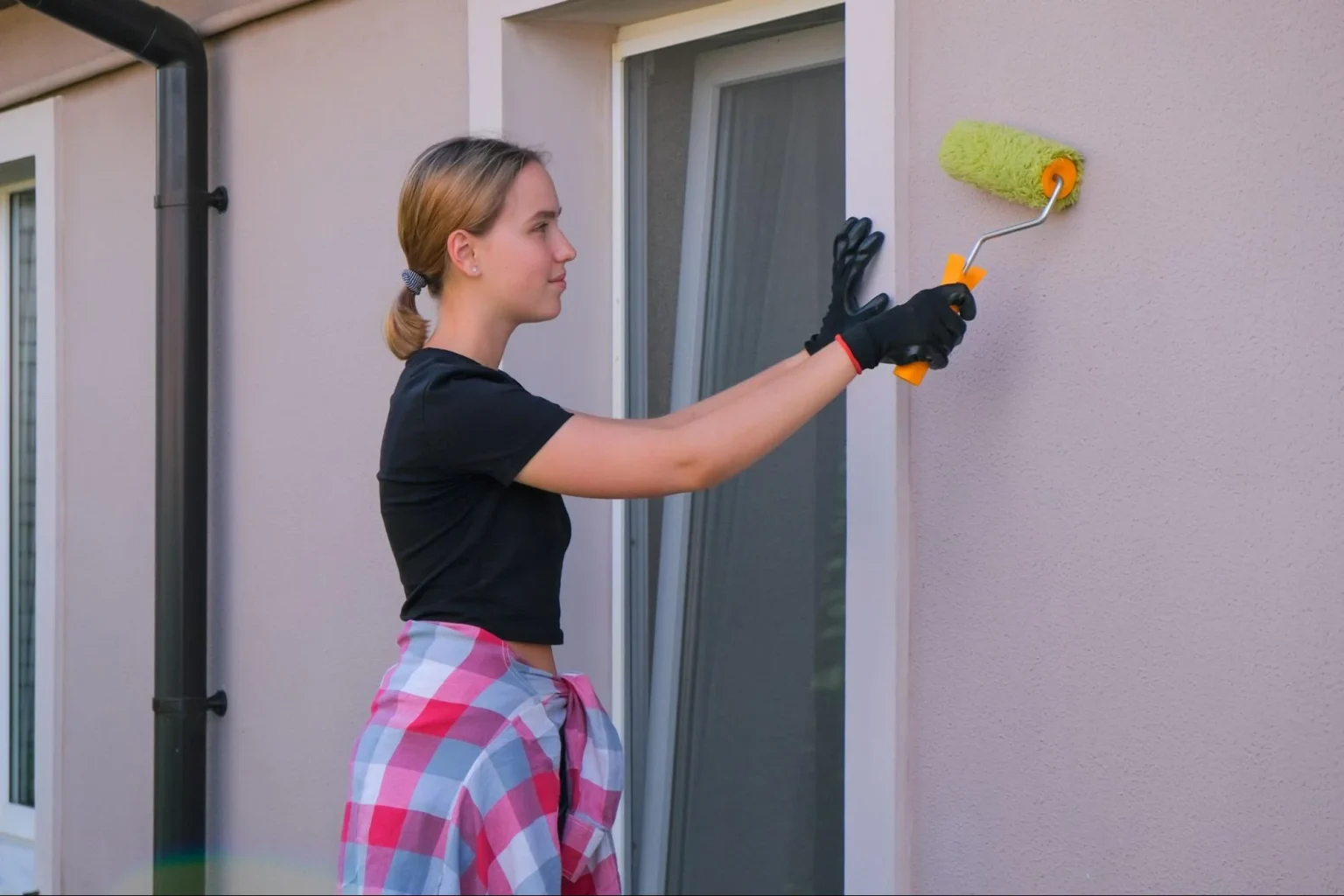
Maintaining your home’s exterior paint is essential for keeping it looking fresh and protecting it from the elements. Regular maintenance can help you avoid costly repainting jobs, saving you time and money. Cleaning the exterior, inspecting for damage, and performing touch-ups when needed can significantly extend the lifespan of your paint.
Preparing your home before painting is crucial. You should clean and sand every surface so the new paint adheres properly. High-quality materials and the right tools also play a big part in achieving a long-lasting finish.
Proper maintenance doesn’t end once the paint has dried. Regular inspections will help you catch any issues early. Addressing minor damage promptly will keep your home’s exterior looking its best and enhance its curb appeal.
To achieve a professional and long-lasting paint job, you must properly prepare your home. This includes inspecting and repairing any damage, cleaning, and priming surfaces, and choosing the right paint and tools. Each step is crucial to ensuring a smooth and durable finish.
Before painting, thoroughly inspect your home’s exterior for damage. Check for moisture, rot, and cracks in wood siding, stucco, brick, and metal siding. Pay special attention to areas near windows and doors. Use a screwdriver to probe wood for softness, indicating rot.
If you find rot, remove and replace the damaged sections. For cracks and holes, fill them with caulking or an appropriate filler. Sand rough spots to create a smooth surface. Repairing damage before painting helps ensure the new paint adheres well and looks great.
Cleaning is essential to remove dirt, mildew, and old paint. Start by pressure washing the exterior, which can effectively remove grime. For areas where a pressure washer can’t reach, use a scrub brush or sponge with a mix of water, bleach, and a phosphate-free cleaner.
After cleaning, rinse the house thoroughly and let it dry completely. Apply a high-quality primer to bare wood, metal, and other repaired surfaces. Priming helps the paint adhere better and provides an even base for the color. A pump sprayer can save time when applying primer to large areas.
Selecting the right paint and tools is crucial for a successful paint job. Opt for a high-quality latex paint for most surfaces due to its durability and ease of cleaning. For metal surfaces, an oil-based paint may provide better adhesion and rust protection.
Choose the appropriate finish for your needs—eggshell, satin, semi-gloss, or gloss. Each finish has its benefits: gloss is highly durable, while satin offers a softer look. Prepare with the right tools: a combination of rollers, brushes, and a paint sprayer can handle different areas effectively. Ensure you have drop cloths to protect areas not being painted and a pump sprayer for larger surfaces.

Keeping your home’s exterior paint in good shape involves routine cleaning, protecting it from the elements, performing professional inspections, and repainting when needed.
Regularly cleaning your painted surfaces removes dirt, grime, and mildew, helping to extend the paint’s lifespan. Use a garden hose to rinse off dust and debris, and a soft brush with mild detergent for tougher spots.
Trim, siding, and gutters should be cleaned as part of this routine. Inspect your paint job periodically for chips or cracks. Touch up these areas promptly to prevent further damage. It helps maintain the durability and flexibility of the paint.
Safety is important. Use appropriate gear such as gloves and goggles. Be cautious when using ladders, making sure they’re stable.
Environmental factors like UV rays, temperature changes, and weather conditions can greatly impact the lifespan of your exterior paint. To shield your home from these elements, ensure your house is shaded by strategically placed trees and shrubs. These protect from direct sunlight, which can cause paint to fade and crack.
Consider using high-quality, weather-resistant paints designed to withstand harsh conditions. Such paints offer increased durability and flexibility. Make sure to seal any gaps around windows, doors, ceilings, and siding with the right caulking materials to keep moisture out. Regularly inspect and maintain these seals to avoid water damage.
Even with the best maintenance, exterior paint will need professional attention over time. Experts recommend having a professional painter inspect your home’s exterior every few years. They can identify issues you might miss, such as hidden mold and mildew or deeper structural problems.
Repainting should be done every 5 to 10 years, depending on the paint used and environmental conditions. Professional painters will ensure the surface is properly prepared, cleaned, sanded, and primed before applying fresh paint. This thorough preparation is key to achieving a long-lasting paint job.
By combining routine maintenance with professional expertise, you can significantly extend the life of your home’s exterior paint. This approach not only keeps your home looking beautiful but also protects its structural integrity.
To ensure the longevity of your home’s exterior paint, always prepare the surface properly before painting. This includes cleaning, sanding, and priming as needed. Use high-quality paint and apply it in ideal weather conditions, typically between 50°F and 85°F with low humidity.
Start by inspecting and repairing any damaged surfaces, using epoxy filler for holes or cracks. Clean the surfaces thoroughly, then sand and prime them. Choose the right paint and apply it using the proper tools and techniques. Make sure to work in suitable weather conditions for the best results.
Inspect your exterior paint at least once a year. Look for any signs of peeling, cracking, or fading. Touch-ups might be needed every five to ten years, depending on the paint quality and exposure to the elements.
To protect exterior paint from weather damage, ensure proper drainage around your home to avoid water buildup. Trim trees and shrubs to reduce contact with painted surfaces. Use high-quality, weather-resistant paint and maintain caulking around windows and doors to prevent moisture intrusion.